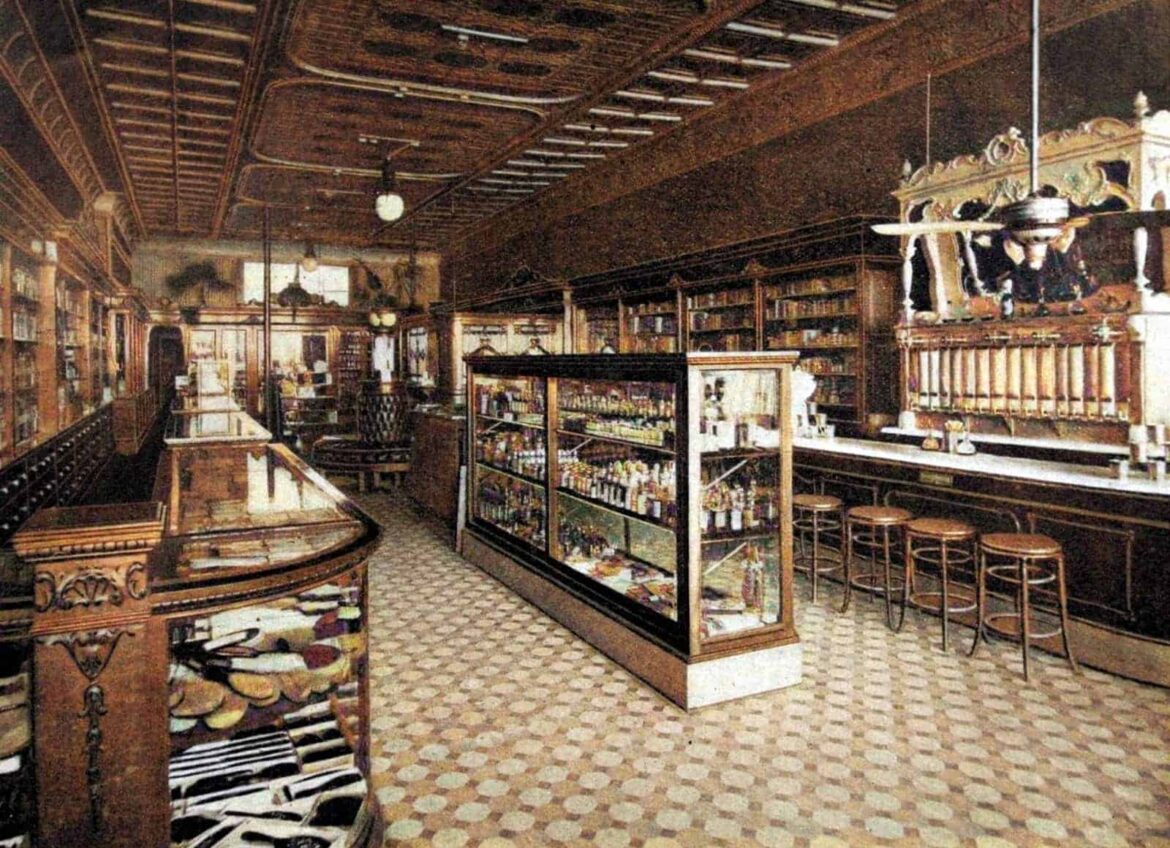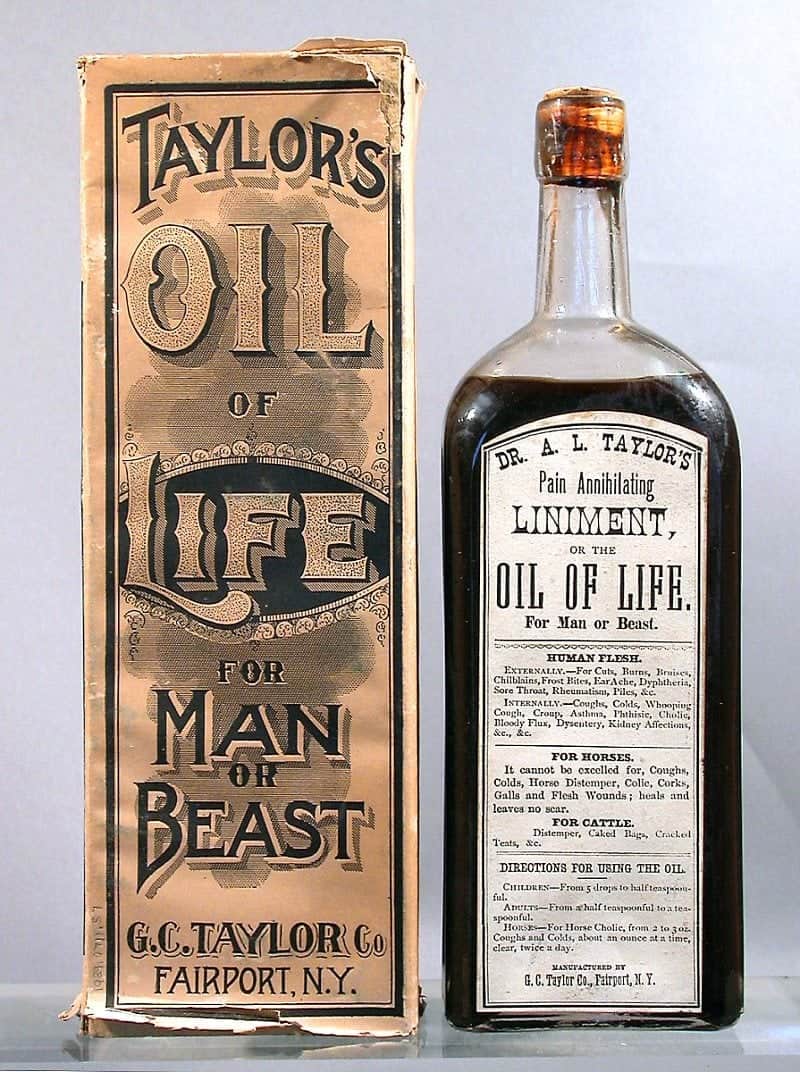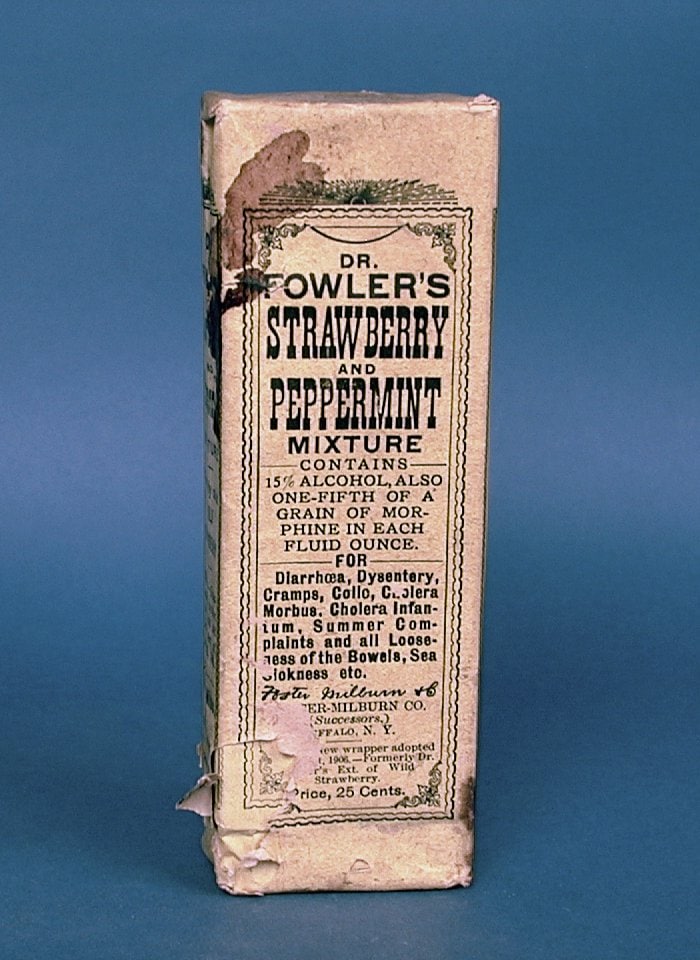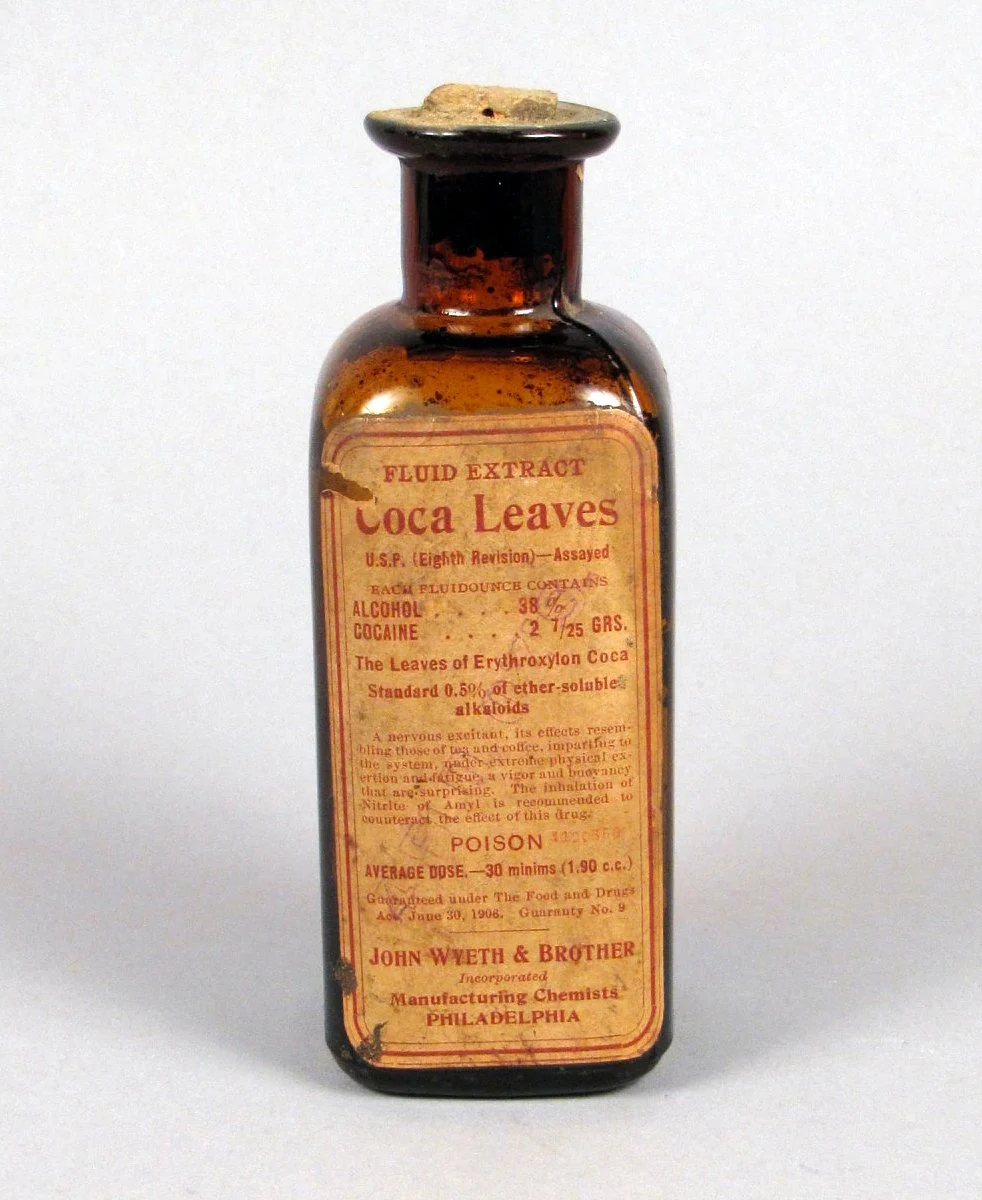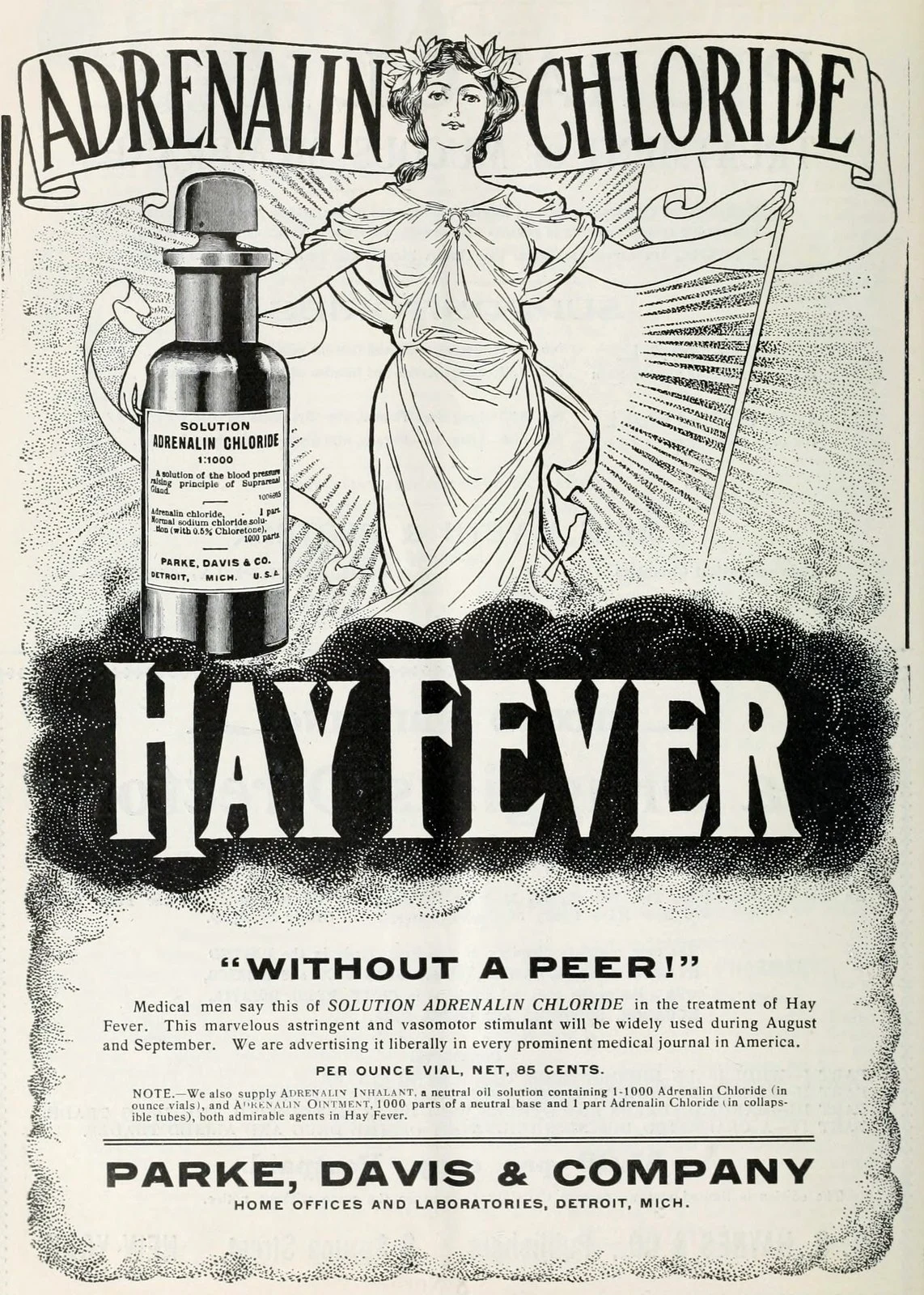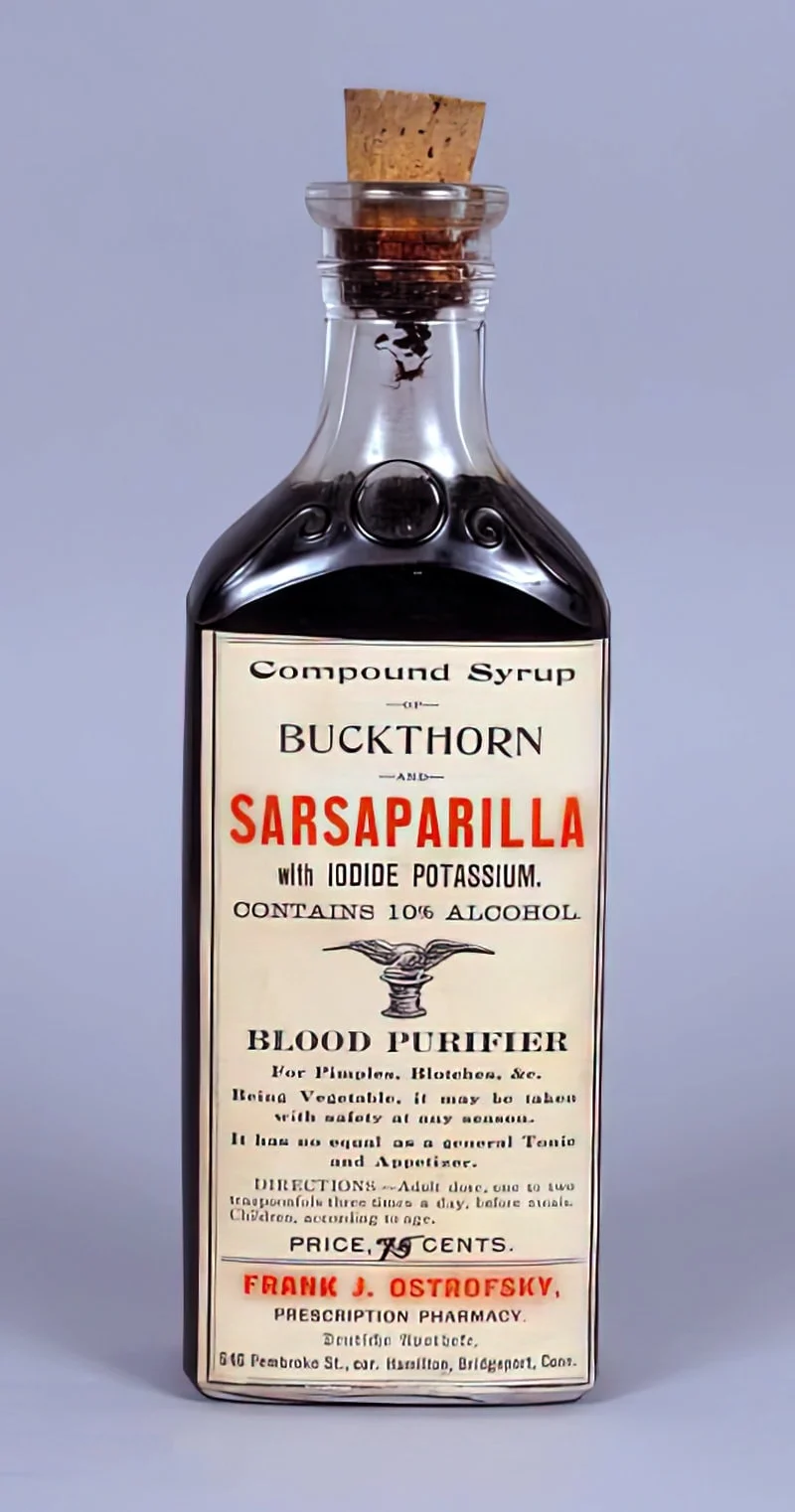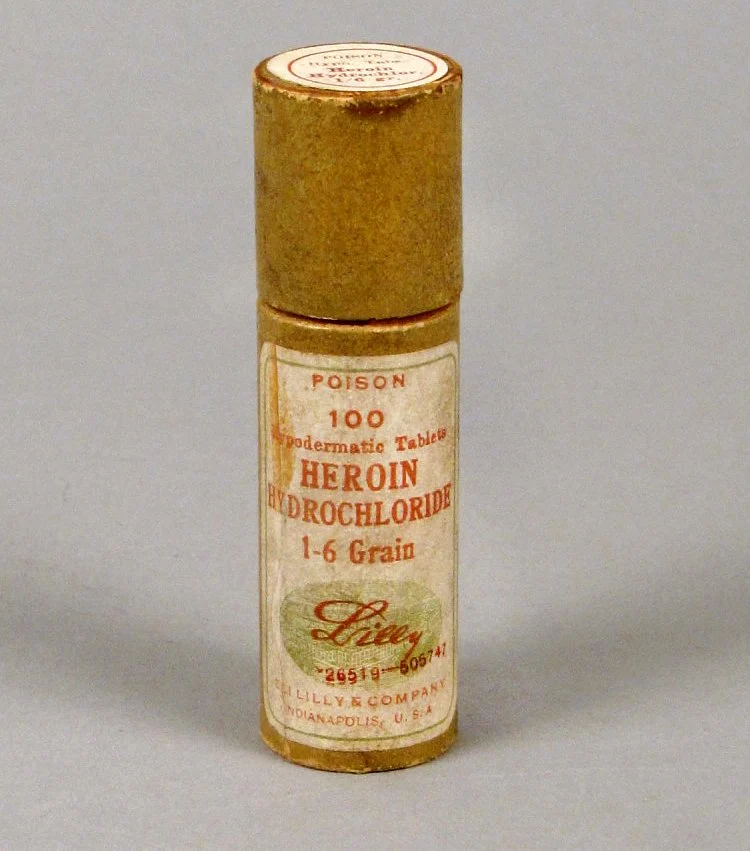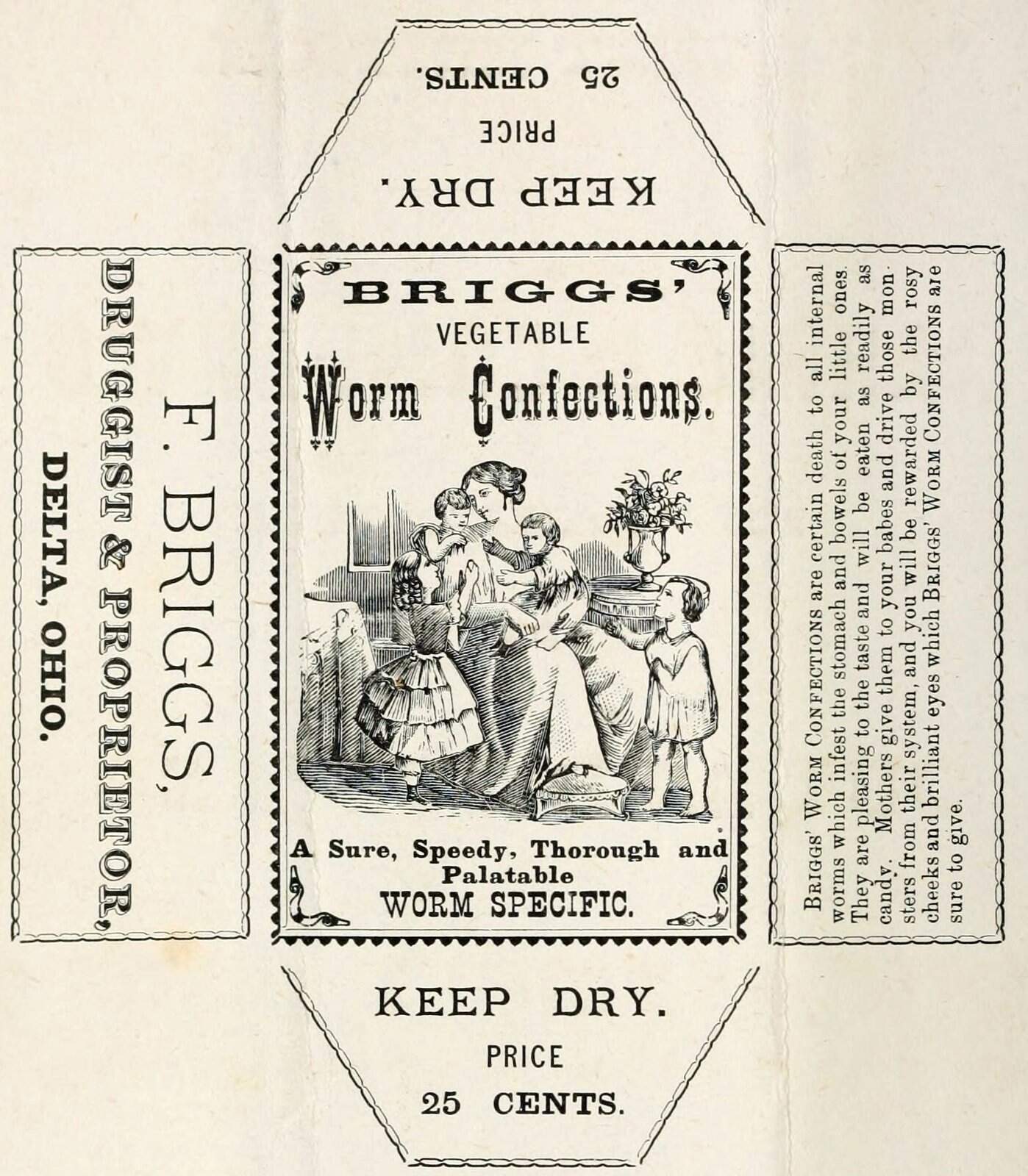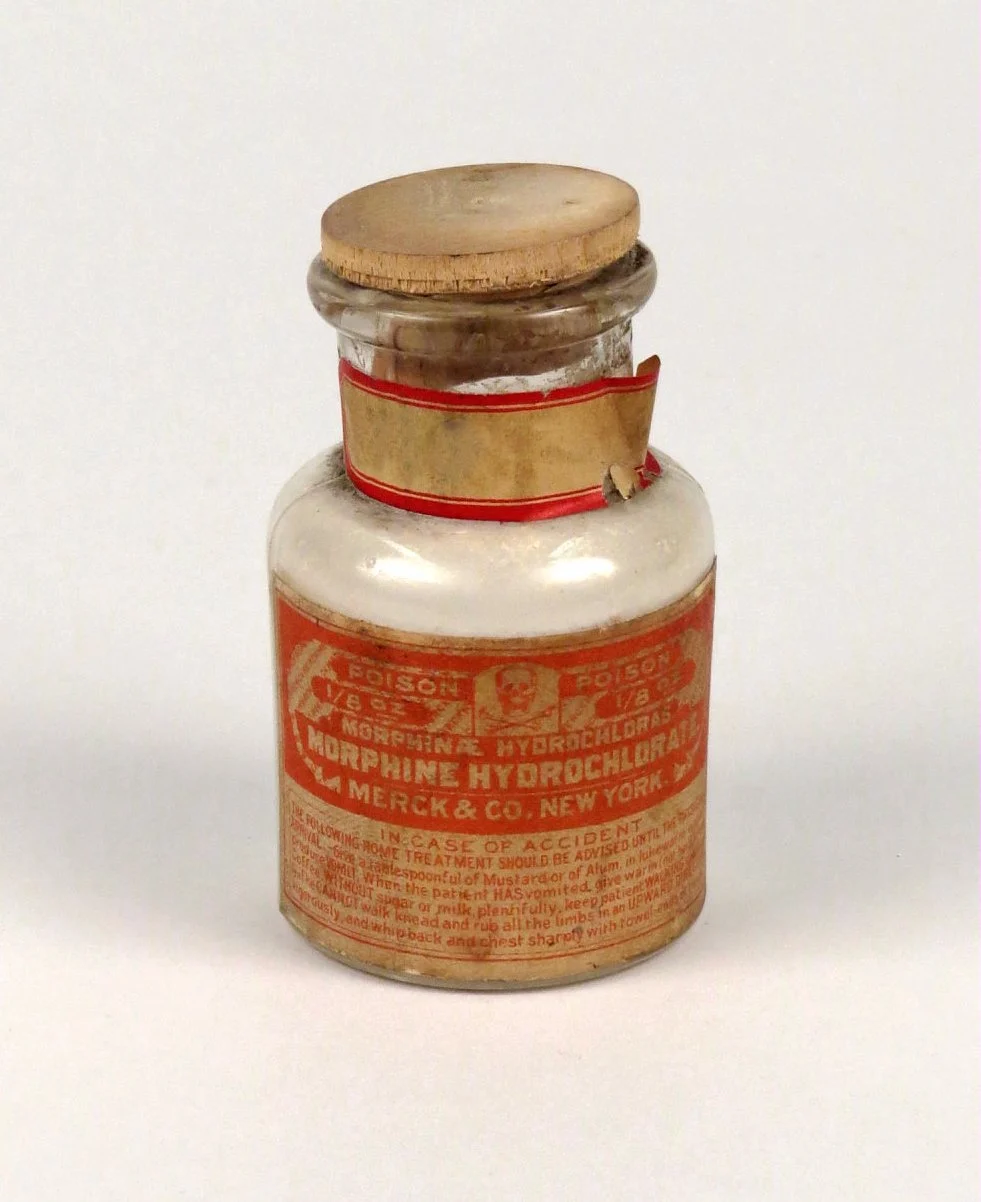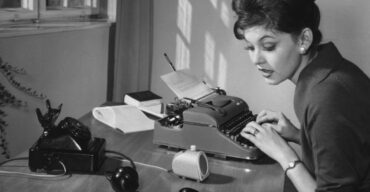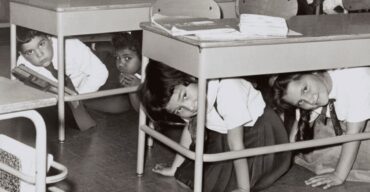If one of the vintage drugstores existed today, it would’ve probably been closed in a second due to the things it would be selling. Back in the day, drugstores sold many wild things that are illegal today.
From heroine to cocaine, here are some crazy things vintage drugstores sold to people that were considered pretty normal.
1. For Humans & Horses: Taylor’s Oil of Life
Even if you did not own a farm back in the day, this product was probably somewhere on your shelf. This miracle tonic was boldly marketed for both people and their beautiful four-legged farm companions.
Taylor’s Oil of Life claimed to cure almost everything from stiff joints to internal ailments (whether you had hooves or not).
It could be found in many households, and people mainly rubbed it on sore muscles or took it by the spoonful.
Today, the idea of sharing medicine with your pet or a horse feels more like a crazy punchline than a prescription.
2. Dr. Fowler’s Strawberry and Peppermint Mixture (c1907)
It was very sweet, and with its soothing promises, this remedy was a hit with parents and kids as well.
It claimed to successfully calm coughs, settle digestion, and even treat terrible tooth pain, and you did not need to fight an awful medicine-like taste because it tasted like a candy.
Unfortunately, most of the old remedies were laced with ingredients like alcohol or opiates, which would cause even more health problems for some.
It was medicine disguised as a treat, but the ingredients would surely not pass today’s laws and regulations.
3. Antique Cocaine Pharmacy Apothecary Bottle – Fluid Extract Coca Leaves (c1910)
You are probably shocked by this as much as we are, but yes, cocaine was once a common item behind the drugstore counter.
This elegant glass bottle once held a liquid extract made from coca leaves. Sounds familiar? Well, yes, those same leaves were used in early Coca-Cola recipes.
It was usually prescribed for fatigue, toothaches, and even mood enhancement. Imagine having a bad day and going to a pharmacy to get some cocaine.
What seems shocking now was once simply another bottle in the apothecary’s kit.
4. Adrenalin Chloride for Hay Fever (1904)
Now we have EpiPens and antihistamines, but before them, you could score a dose of adrenalin in a tiny glass vial.
If you had hay fever or your nasal passages were blocked, adrenalin chloride was prescribed to you, and it was administered through drops or even injection.
You would feel better almost instantly, and doctors loved it. But, even though it was very effective, it came with serious health risks and was quickly overshadowed by safer options.
5. Compound Syrup of Buckthorn and Sarsaparilla (1903)
If you had problems with your gut or any other health concerns, this syrup tonic was probably on your shelves. It was billed as a blood purifier and gentle laxative.
Buckthorn surely helped your digestion, while sarsaparilla added flavor and supposed detoxification.
Back in the day, ‘cleansing your blood’ was very popular, and many felt a need to do it every spring.
Just like anything from this list, its ingredients were suspicious and the actual benefits were questionable… but the packaging was definitely charming.
6. Heroin Hydrochloride Hypodermatic Tablets
Shocked again? Well, heroin was once legally recommended by many doctors and sold in tablet form.
These tablets were designed to be dissolved and injected mostly for pain relief. Morphine was seen as highly addictive, so heroin was initially hailed as a medical breakthrough.
Everyone used it at first, but once the negative side of it became more prominent, it was banned from pharmacies for good.
7. Briggs’ Vegetable Worm Confections (1874)
Although they looked like it, these chewy treats weren’t candy; they were deworming medicine for kids.
They were cutely packed with natural ingredients, and they claimed to rid children of intestinal parasites.
Parents would hand them out like sweets, and they were definitely not aware of the questionable science behind them.
Still, children preferred them to some oils and nasty pills, so it was a success in parents’ eyes.
8. Morphine Hydrochlorate
Seen as one of the strongest painkillers available, morphine hydrochlorate was usually a common item on the pharmacy shelf.
If you were a girl suffering from menstrual cramps or someone who had constant migraines, your doctor would prescribe it to you without any concerns (and there was room for many).
This cure was potent, effective, but many found out that it was highly addictive too.
Today, because of its addictive nature, it’s tightly controlled. But in vintage stores, it was as common as Paracetamol.
